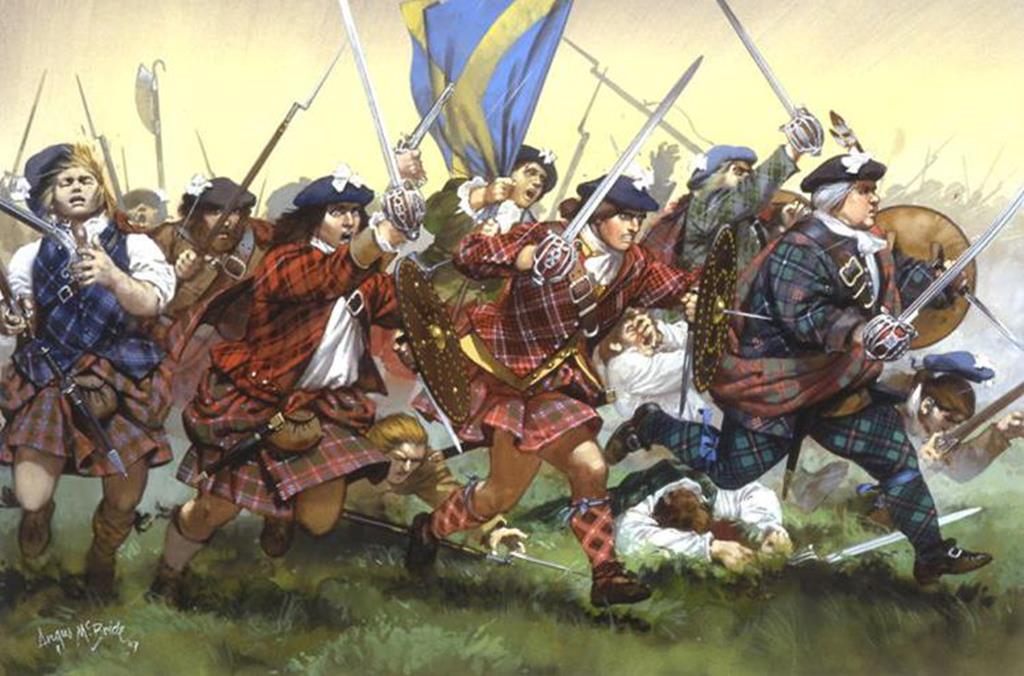Here is a great article on what the Scotts were doing here years ago.
The Scots should have stayed away from the place more than 300 years ago. It they had, perhaps today they would not have to hold a vote to regain independence.
The Scots, famed for thriftiness, sank almost half of their national wealth between the mangroves of Panama.
But it was there, at the Gulf of Darién, where Panama is today, that the once independent Scotland squandered what little wealth it had, forcing it into England’s arms.

Sir William Paterson
At the turn of the 17th century, the Scots, famed for thriftiness, sank almost half of their national wealth between the mangroves of Panama.
The man responsible for the plan was hardly known as a gambler. William Paterson (1658–1719), Scottish businessman and politician, had founded the Bank of England, which played a key role in rebuilding the English navy, and putting England in the lead for the Industrial Revolution decades later. He had credibility.
Scotland was poor then, plagued by failed harvests and civil wars. While neighboring England grew rich with its colonies in trade and industry, the north remained untouched by progress. William III, king of England, Scotland and Ireland, had left the trade monopoly in Britain’s American territories to one company and expressly excluded his subjects in the north.
Paterson’s idea: a colony of Scotland’s own. It came to him during a stay in the Bahamas. By setting up stations on the Atlantic and Pacific sides at the narrowest part of the isthmus of Panama and connecting them with a road, the traffic with East Asia could be shortened by 10,000 kilometers and many weeks just by loading and unloading the goods twice. A fortune could be made!
Paterson did not write that his secretary had died just one day after arrival, his wife and child shortly thereafter.
In 1695, Paterson founded the “Company of Scotland” and collected funds from private investors in London. He soon raised 300,000 pounds on his good name. But the British East India Co. feared for its trade monopoly in Asia and used its political influence to enforce a decree requiring investors to withdraw all contributions.
So the company campaigned for investments in Scotland’s capital city of Edinburgh. The contributions came even faster, with 50,000 pounds raised the first day. The wealthy and the not so wealthy, nobility, businessmen and captains, farmers and civil servants. They all pitched in. Treasurers of cities and municipalities speculated with public monies for the planned colony: Caledonia! Almost 400,000 pounds in total.

17th-century map of the Darién province in Panama
Five ships set sail from Leith, a North Sea harbor, in July 1698. Farmers and craftsmen, men and women, including former soldiers, 1,200 hopeful Scots who planned to start a new life in a tropical paradise. Paterson, his wife and their young child joined. The journey around Scotland was rough and many became seasick. But by November, they dropped anchor in the Bay of Darién.
Optimistic-sounding letters soon found their way to Scotland, though historians suspect the letters were contrived to paint a rosy picture. Paterson did not write that his secretary had died just one day after arrival, his wife and child shortly thereafter. Back home, the next 1,200 people prepared to follow them to the New World.
But in the colony, desperation set in. Where New Edinburgh was being formed, the only drinking water came from cisterns. Fearing the Spaniards, colonists first built a fort, “St. Andrews,” equipped with 50 cannons.
The country never recovered from the financial shock.
By the time the first log cabins were erected, many had already taken ill — malaria, yellow fever — and could not work, build houses, clear the forest or hunt. Friendly Kuna Indians came by in kayaks occasionally, bringing bananas and other fruit.
But food supplies dwindled and spoiled quickly in the hot, humid climate. Colonists caught turtles, but the supply of able-bodied hunters dwindled quickly. Constant rain dampened the mood.
Trade with the Indians went nowhere. And no ships arrived with loads to carry over the isthmus. And in any case, no one was able to carry them.
In May the next year, an ailing Paterson wrote home calling for reinforcements. The Scottish colony, said the founder of the Bank of England, had good prospects of becoming the most valuable in the whole of Europe. The letter never arrived, likely intercepted by the English in Jamaica, where the royal order had arrived from London to prohibit any trade with the Scottish colony. In July, those remaining gave up and sailed home. On death ships. Only one arrived, with 300 survivors.

Source: Christer Fredriksson/Getty
An indigenous Embera man guides his canoe on the Chagres River past neotropical rainforest in Panama.
In the meantime, the second group of 1,200 unsuspecting Scots had already set off, in delightful anticipation of finding a flourishing settlement. Upon arrival in November, they found a ghost town, a disaster. Agony quickly set in, fights, arrests, escapes into the jungle. And disease.
Then the Spaniards came. The Scots retreated into the armed fort. They held out for a month before bargaining for free retreat. They sailed home, but three-quarters of them perished from illness, hunger or despair.
According to estimates, half of Scottish national wealth was lost in the bankrupt Company of Scotland. Many people lost entire fortunes. The state was insolvent.
The country never recovered from the financial shock. Ultimately, the wealthy realized that prospects for trade would improve in a country united with England, which had treated the Scots as second-class foreigners.
In London, the government and the royal family seized the opportunity to expand their powers. In 1706, England took over Scotland’s national debt, and the countries were united in the new Kingdom of “Great Britain.” Scotland joined the colonial power — at the price of independence.
Ulli Kulke writes for the German newspaper Die Welt
